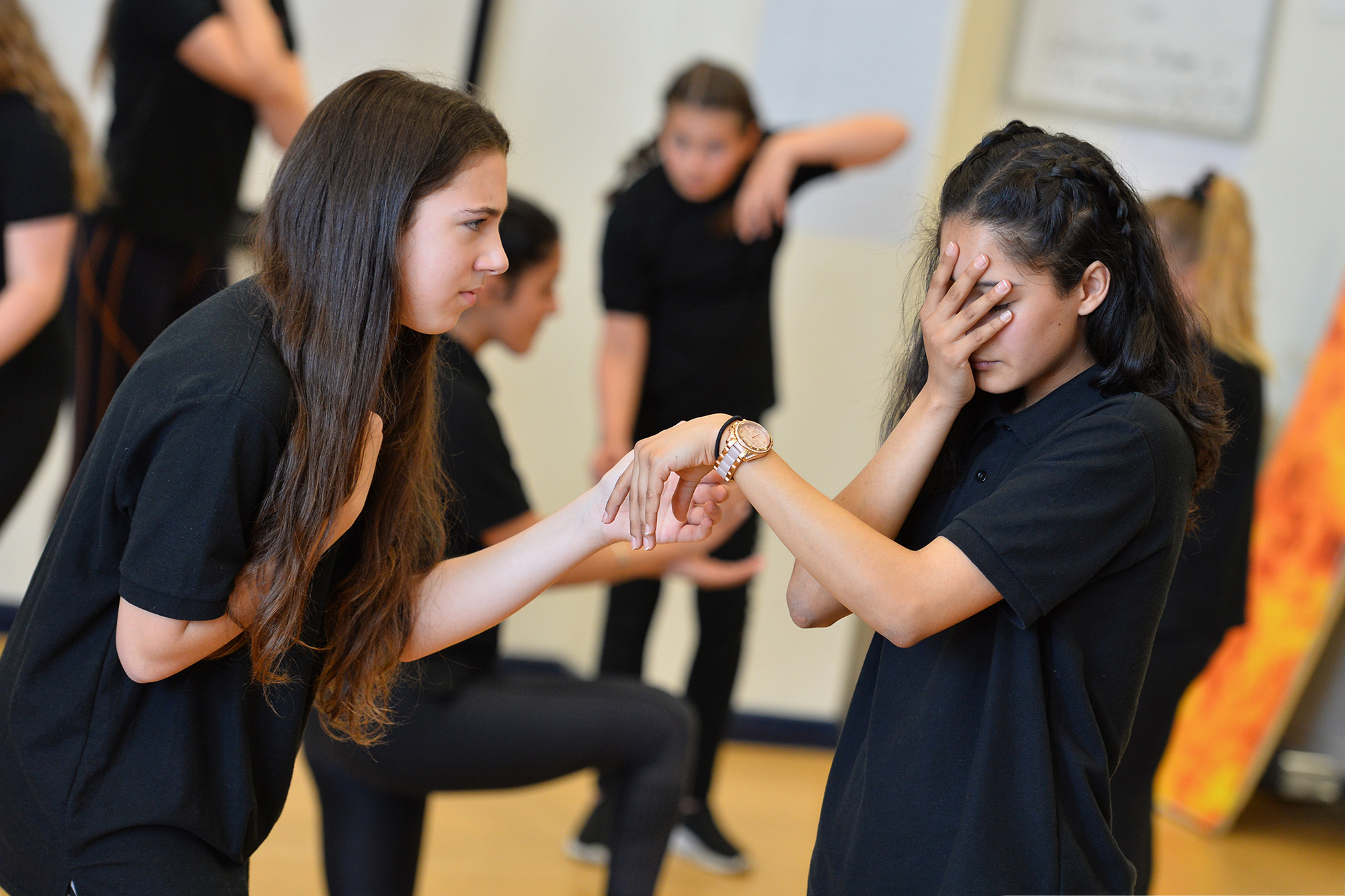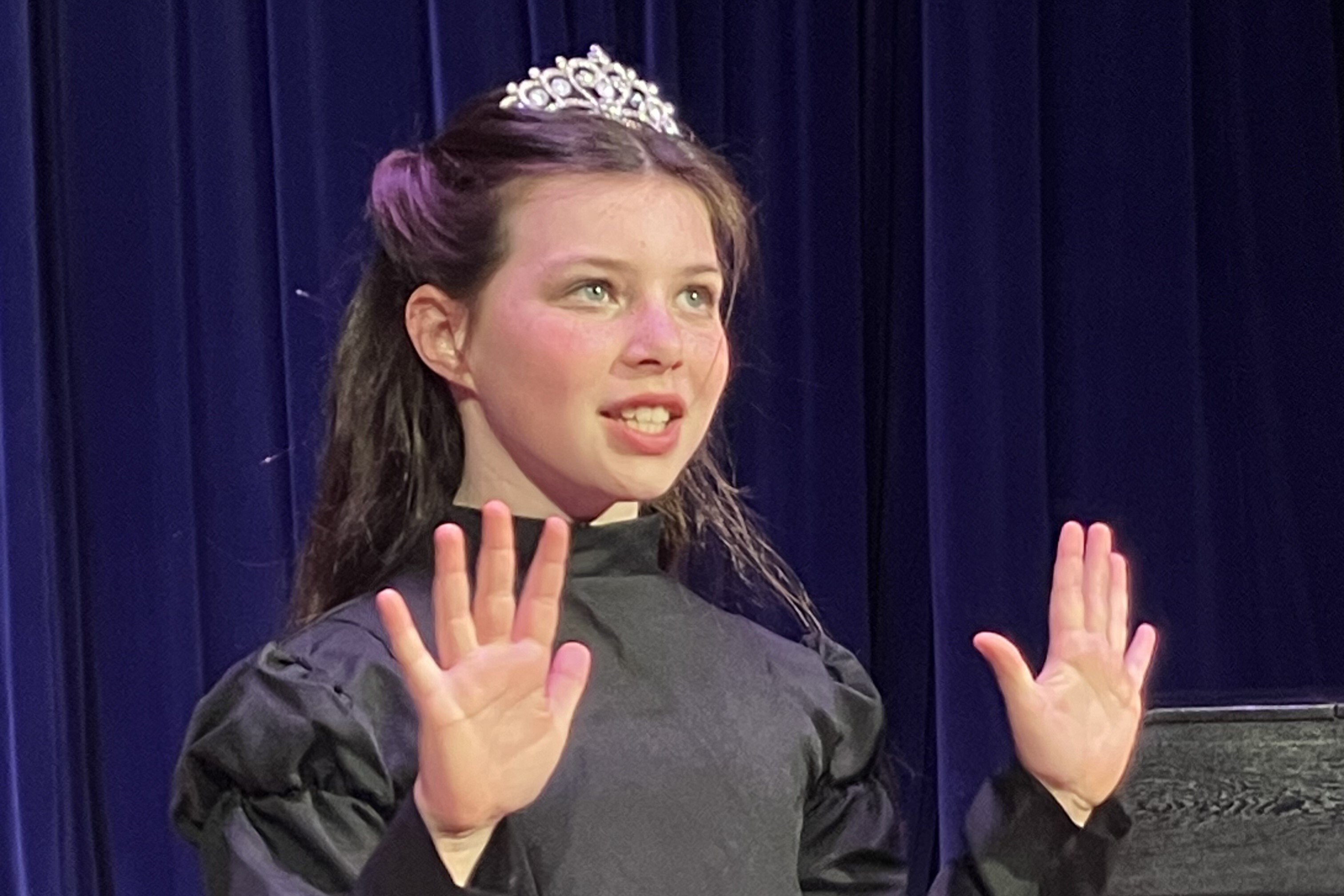
Exploring the Performance Arts Contributory Skills task
BY: Nicola King
25 January 2023
Performance Arts graded exams are unique to Trinity College London. They are the most inclusive of Trinity’s drama exams, and offer an opportunity for a diverse range of performance skills to be assessed. These exams are designed for candidates who want to explore the variety of performance arts, not only dance, music and acting, but any other performance skill - from puppetry to physical theatre, film-making to creating a stand-up comedy routine, mask making or stage combat – the possibilities are endless!
One of the most innovative elements of the Performance Arts exams is the ‘Contributory Skills’ task, where candidates can demonstrate and be assessed on skills such as:
- Costume design
- A presentation of stage props
- Set or lighting design
- Creating an original composition or choreography
- A presentation of a piece of recorded media with commentary
Trinity acknowledges that these vital skills are essential in the world of performing arts and so offer candidates the opportunity to be assessed in these areas, allowing candidates to focus on personal interests and abilities. In this blog we will explore what the Contributory Skills task involves, as well as giving some examples for how candidates might put together an exam programme.
At Foundation and Intermediate levels, the Contributory Skills task is optional, while at Advanced level it becomes compulsory. The objective of the Contributory Skills task is to allow candidates the opportunity to develop skills that support or contribute to one of their performance pieces. This task asks candidates to deliver a presentation around their chosen skill and explain how that skill supported their performance. Candidates can use visual/audio aids to illustrate their presentation, such as the text of a poem or story they have written, an audio recording of some sound effects they have created, or a prop they used.
During the exam, the candidate is first asked to briefly introduce their demonstration, for example: ‘I would like to tell you how I made these fairy wings that my character wore in the performance’. The wings do not need to be made in front of the examiner, instead a description can be given on how they were made — the materials used, how the pieces were assembled, how the wings are attached to the body, etc. The aim is to explain the process and the skills needed, showing evidence of planning and preparation in the realisation of their ideas.
The specification for Performance Arts is focused on the idea that the performer may have a range of skills in performance work and also in the whole creative process of theatre making. So, at Advanced level, the candidate is asked to explore and engage in these areas as a mandatory part of the assessed work. This very much reflects the way in which many contemporary theatre companies work – the actor may also be a musician but also the writer, the choreographer, the director etc.
At Entry and Foundation levels (Initial, Grades 1–3) candidates who opt for the Contributory Skills task should be giving demonstrations that are carefully prepared with some choices of interpretation evident. An ability to organise and express their ideas about the meaning of the work, the skills used and, where relevant, the value of the contributory performance skill to the performance should also be shown.
For example, a candidate that offered magic as one of their skills could give a demonstration of how they went about learning the tricks, some rules of the magic circle, the skills needed to perform a trick etc.
A Pair exam, where one of the performance pieces involved mask work, could give a demonstration of how they created the masks, showing sketches, discussing what material was used, what technicalities - such as projection - needed to be considered.
A Grade 3 Group exam, where candidates are demonstrating two performance skills and one Contributory Skill could look like this:
The group performs an original musical composition which merges into a mime, using the instruments as props such as a suitcase, a telephone etc. The group then shares the process by which the musical composition was realised, sharing notes and the score of the final version, along with an explanation of why this version was decided upon.
At Intermediate level (Grades 4–5), candidates should be giving demonstrations that are well-prepared and that show a secure understanding of the skill they are presenting, its contribution to performance in general and to their own performance specifically.
Some creative ideas should be evident in the presentation. As part of Task 1, the candidate may have, for example, performed an abstract dance piece, so, in Task 2, they might choose to present a storyboard with the dance moves clearly expressed, which shows the choreography, its connection with the music and with the storytelling.
In a Pair exam the candidates may have performed a duologue for Task 1, Task 2 could then involve one candidate discussing how they designed the makeup for the characters, demonstrating on the other candidate how this contributed to the character and storytelling.
A Grade 5 Group exam, where candidates have chosen to demonstrate three performance skills and one contributory skill, could look like this:
The group performs a spoken word performance which merges into song, and then a jazz dance routine. The group then demonstrates, with use of dance charts and paperwork, how they created the choreography for the jazz routine, clearly outlining the narrative and character thread.
At Advanced level (Grades 6–8), the candidate needs to demonstrate in-depth knowledge and understanding of their skills in their programme. The demonstration should show substantial evidence of preparation and research.
For example, a candidate may have given a performance using a puppet. For the demonstration, they could show the puppet costume detail — all made by the candidate. Or they might show how they made the puppet itself.
A Pair exam could involve the candidates giving a demonstration of the directing and lighting design of their performance pieces, using marked up scripts, storyboards, lighting plans and how these were used to create portray setting and mood.
A Grade 8 Group performance, where the candidates have chosen to demonstrate four performance skills and three contributory skills could be put together like this:
The group starts the sequence (connecting theme ‘who am I really…?’) with a piece of audio drama, a monologue recorded with sound effects, script and effects created by the candidates. Then a magic act develops the sequence, the central character from the audio drama becoming the magician who continues the monologue using tricks to talk about who they really are, offering clues with each trick. Finally, the magician produces two puppets, the final sequence is a scene between these two puppets which finally reveals the identity of the protagonist.
The group gives a demonstration on the technique of animating the puppets/the puppetry. And a live demonstration on how the ‘foley’ effects were created for the audio drama. (e.g. walking through snow created by rubbing cotton wool between finger and thumb close to microphone) as well as the recording techniques to effect the performance.
Contributory Skill tasks are a brilliant way to formally recognise theatre making-related skills. If a candidate’s performance skill set or interest lies outside the remit of the other drama exams, we can provide a home for them here, giving candidates the opportunity to create contemporary 21st century theatre, that reflects their personality and culture using performance skills they may already have or providing an incentive to explore new ones.
For more information about Performance Arts watch this video about preparing students for Performance Arts exams.


.jpg)

Comments & Replies